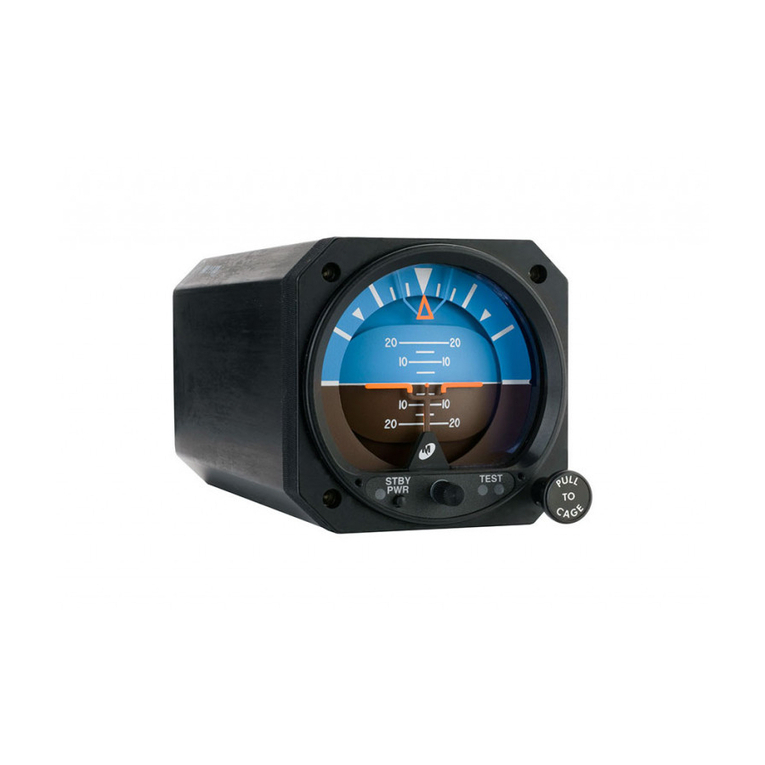
Mid-Continent Instruments, Wichita, KS
Rev B May 25, 2004 Manual Number 9015762 Page 5 of 21
Section 1: General Description
1.1 Purpose of Equipment
The Model 4300-4XX Electric Attitude Indicator incorporates a moving display that simulates the
earth’s horizon and provides the pilot with a real time visual indication of the aircraft pitch and
roll attitude relative to the indicator symbolic airplane.
The instrument can function as a primary or standby indicator with special configurations
available to match existing systems or electronic flight displays. In the event aircraft electrical
power is lost, the indicator will switch to an internal backup power source (rechargeable sealed
lead acid battery) to permit continued operation of the indicator. Panel tilt, input voltage, lighting
color/voltage, non-trimmable knob cover, front mount adapter plates and a slip indicator are
available as options.
1.2 Physical Description
The 4300-4XX Electric Attitude Indicator incorporates pitch and roll displays that are mechanically
linked to a spinning mass gyroscope. The horizon bar moves behind the symbolic airplane.
Precession error is corrected by the 4300’s erection system or by pulling the “PULL TO CAGE”
knob. A warning flag drops into view to indicate that the gyro motor is not receiving sufficient
power to operate. This will normally occur only if the unit is turned off, or after the internal
standby battery is exhausted.
1.3 Functional Description
Model 4300-4XX Electric Attitude Indicators employ an efficient electrically driven internal vertical
gyroscope assembly incorporating a special air erection mechanism. This mechanism
simultaneously erects the pitch and roll axes of the gyroscope. Movement of the aircraft
generates a reaction of the display that simulates the visual reference seen by the pilot when
looking outside at the earth’s true horizon line.
The 4300-4XX Electric Attitude Indicator offers the unique feature of a self-contained standby
power source. Advances in the design of this gyro system allow it to operate for about one hour
after main input power is lost, depending on the battery condition at the time of power failure.
Anytime aircraft power is absent, with the unit in either power loss warning mode or turned off,
pushing the STBY PWR button will put the unit into the standby power mode. The instrument
will run from standby power until the internal battery is exhausted. If the unit is already running
on standby power (internal battery), pushing the STBY PWR button will turn the unit off
completely. Pushing the STBY PWR button again will restore unit operation to standby power.
Restoring aircraft power will clear any standby power mode and automatically resume standby
battery charging.
The indicator requires 10 to 32 VDC or +27.5 VDC (22.0 to 32.0 VDC) input voltage (dependent
on configuration). An integral lighting system featuring a user replaceable light tray assembly
operates from the aircraft lighting bus and is available in 5V, 14V, or 28V versions (dependent on
configuration). In standby power operation, low intensity LED powered dial lighting is
automatically turned on to provide nighttime visibility.
The internal battery is designed for emergency use only. Frequent use, extended discharging,
extended lack of charging, misuse and age will require battery replacement. Replacement can be
done in the field with or without removal of the attitude indicator. Do not operate this model




























